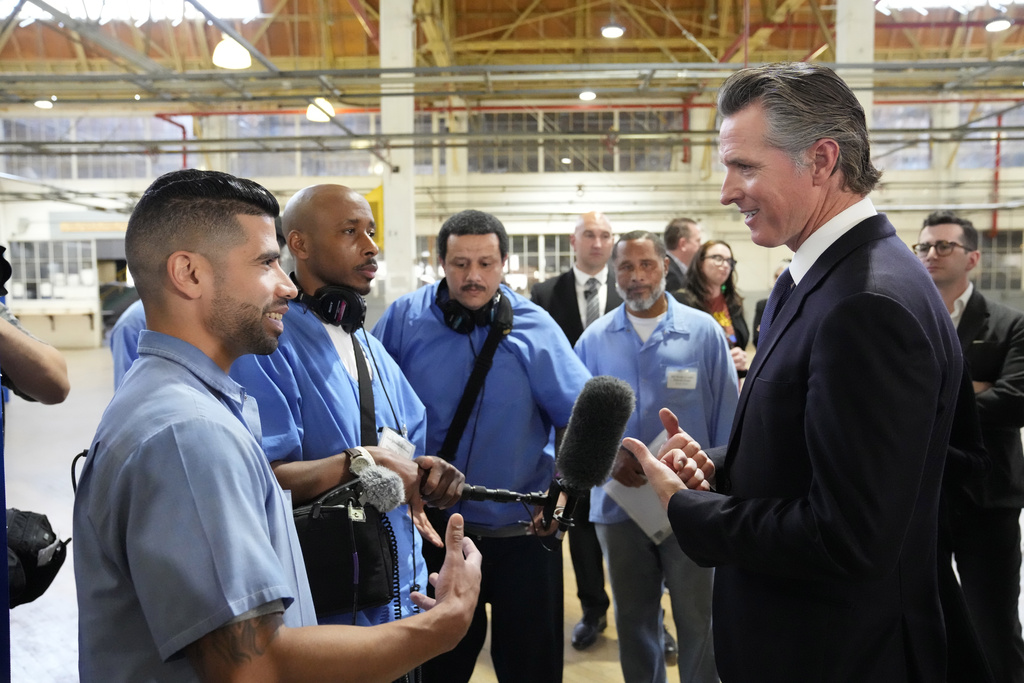A state board recently voted unanimously to create long-awaited indoor heat standards for California workers. After a final legal review, that will mean protections for millions of people with jobs in warehouses, kitchens and other workplaces that are getting dangerously hot as the climate warms.
The board made one glaring exception, however — for prisons and jails. The state Department of Finance had withdrawn its support for the standards just as they were about to be approved in March, noting that the rules would cost prisons and jails billions of dollars. To salvage the regulations, the California Division of Occupational Safety and Health, known as Cal/OSHA, excluded such facilities from the standards.
Opponents of the standards point to the high costs associated with installing and running cooling systems, offering workers more breaks and other ways of adapting to heat. And adapting to climate change is indeed costly. So excluding prisons and jails may seem like a straightforward, pragmatic way to cut the cost of regulations that will undoubtedly be expensive anyway.
Research has suggested, however, that the regulations could save up to $875 million annually by preventing heat-related injuries among California workers. And the threat is only growing more urgent: Last summer was the hottest on record, and this one might prove even hotter.
Extreme heat kills more people than all other extreme weather events or natural disasters, though these deaths are often hard to recognize and tend to fall through the cracks of official counts. Heat can also contribute to a range of illnesses and injuries, from kidney disorders, strokes and exhaustion to workplace accidents. And heat can exacerbate underlying health conditions.
The need for indoor heat regulations, in short, is clear. Lives can be saved by imposing these rules as quickly as possible, especially as the summer heat descends on us.
Cal/OSHA has indicated that it may eventually develop separate standards for California’s prisons and jails. But it’s taken nearly a decade to come this close to adopting indoor heat standards for other facilities. Because of the high cost of cooling prisons, a sense that air conditioning is a “luxury” and a dehumanizing belief that incarcerated people are not worthy of such care, it seems unlikely that we’ll see separate heat standards for such facilities anytime soon.
Yet the danger of heat in California’s prisons and jails is undeniable. Incarcerated people are especially susceptible to extreme heat for several reasons, including the locations of jails and prisons, the way they’re built, their general lack of air conditioning and ventilation, the prevalence among prisoners of health conditions that heat can worsen and the use of psychiatric drugs that exacerbate the consequences of heat. Incarcerated people are on the bleeding edge of vulnerability to climate change.
California has a moral and legal obligation to ensure that incarcerated people are protected from heat. As the legal scholar Sharon Dorovich has detailed, society’s right to incarcerate anyone is rooted in a “carceral bargain” made by the state that entails “an ongoing affirmative obligation to meet the basic human needs” of inmates. The constitutional prohibition of cruel punishment makes this duty “nonnegotiable.”
The state is failing to uphold its end of this bargain. A recent survey of people imprisoned in California found that two-thirds of respondents had experienced extreme heat and that state plans to protect them have not been implemented.
Related Articles
Federal judge finds California in contempt over prison mental health staffing
Opinion: If California opts for smaller prison changes, rehabilitation must remain priority
San Quentin inmate actors lean into notorious Shakespeare play
Feds face trial over reports of abuse at FCI Dublin
Opinion: California’s budget can’t afford to maintain empty prison beds
Like climate adaptation, incarcerating people is expensive: California spends an estimated $132,860 a year in public funds to keep one person in custody. If we can’t provide for those people’s basic needs, we are obligated to release them.
The state’s nonpartisan Legislative Analyst’s Office recently calculated that deactivating five California prisons would save $1 billion annually. Closing prisons according to a road map developed by Californians United for a Responsible Budget could cover the cost of climate-proofing the remaining facilities. With 13,000 empty beds, a number projected to swell further, we have the capacity to do so.
Downsizing a dilapidated and bloated prison system makes fiscal sense for a state in the red. And as temperatures continue to rise, closing prisons and jails is an increasingly promising strategy for pragmatic and ethical climate adaptation that won’t break the bank and will save lives.
Nicholas Shapiro is the director of the Carceral Ecologies Lab at UCLA. Bharat Jayram Venkat is the director of the UCLA Heat Lab. ©2024 Los Angeles Times. Distributed by Tribune Content Agency.












